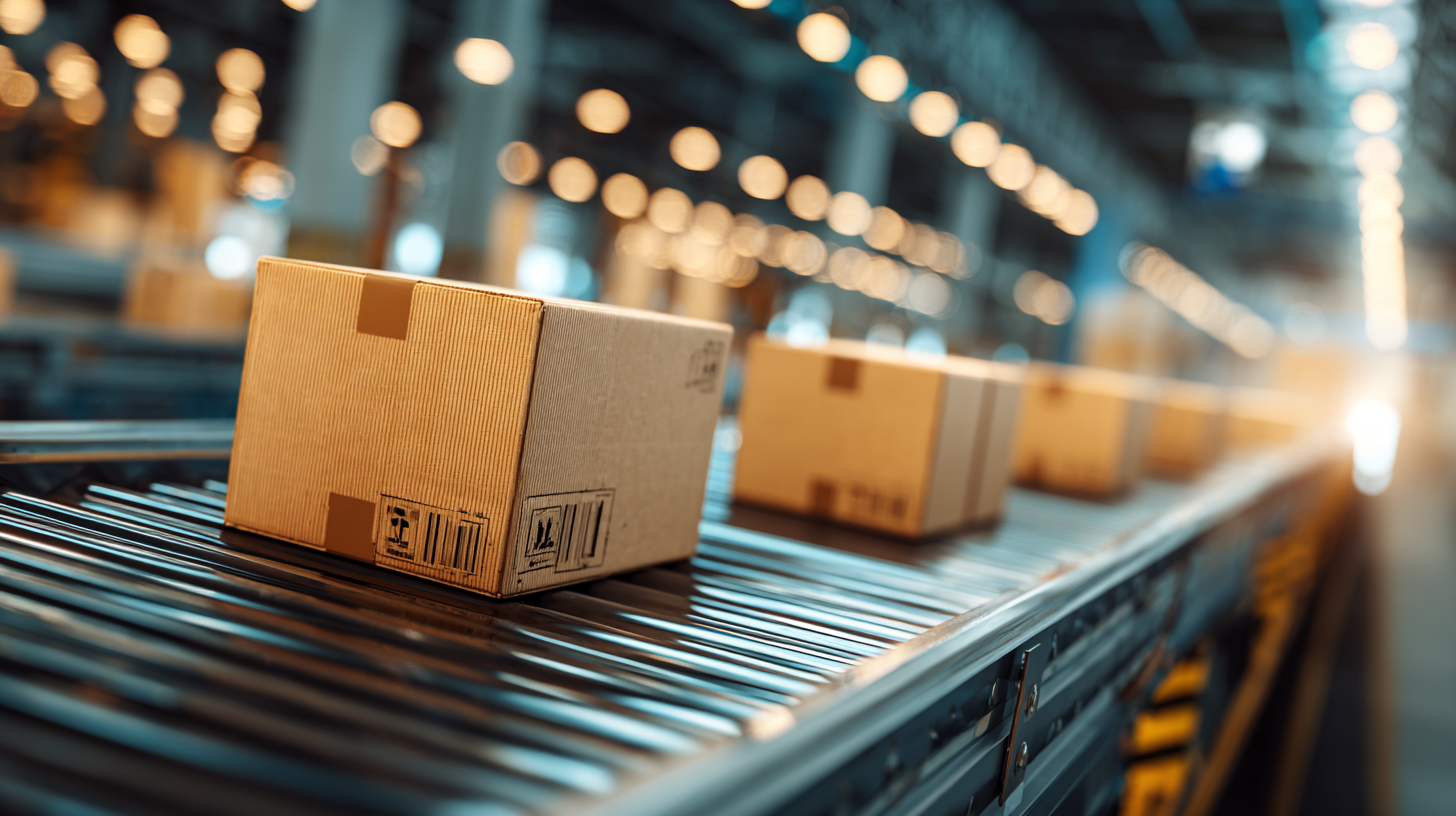In the competitive landscape of e-commerce, optimizing the FBA Amazon shipping process is crucial for achieving maximum efficiency and cost-effectiveness. According to a recent report by eMarketer, Amazon's share of the U.S. e-commerce market is projected to reach 40% by 2023, highlighting the need for sellers to streamline their logistics to remain competitive. Efficient management of FBA Amazon shipping not only reduces delivery times but also enhances customer satisfaction, which is essential in a marketplace where speed is paramount.
Research from SellerLabs indicates that sellers who effectively utilize Fulfillment by Amazon can experience up to a 15% increase in sales, thanks to the reliability and trust associated with Amazon's shipping capabilities. As the demand for fast and reliable shipping continues to rise, understanding how to optimize this process becomes a strategic necessity for sellers aiming to thrive in the ever-evolving e-commerce environment.

Understanding the FBA shipping process begins with recognizing the essential steps involved in fulfilling Amazon orders. First, sellers need to create a shipment plan in their Seller Central account, selecting the products they intend to send to Amazon's fulfillment centers. Effective inventory management is crucial; it ensures that sellers do not overstock or run out of popular items. Each product must be properly labeled according to Amazon's requirements, which helps streamline the receiving process at the warehouse.
Once the shipping plan is prepared, the next step is to pack and ship the items correctly. Using appropriate packing materials not only protects the products during transit but also reduces the likelihood of damage claims. It's vital to choose reliable carriers and track shipments closely to address any issues that may arise promptly. Additionally, sellers should stay informed about Amazon’s guidelines and requirements that could impact their shipping efficiency, ensuring compliance and optimizing their processes for a smoother operation.
When it comes to optimizing your FBA Amazon shipping process, selecting the right packaging materials is crucial for maximizing efficiency and reducing costs. According to a report by the Packaging Innovation Association, nearly 40% of companies experience significant shipping delays due to inadequate packaging that fails to protect products during transit. This not only affects delivery times but also customer satisfaction, highlighting the importance of investment in high-quality materials.
Using packaging materials that are both lightweight and durable can lead to substantial savings. For instance, studies suggest that companies can save up to 20% on shipping costs by utilizing corrugated cardboard boxes instead of traditional packaging, due to their lower weight and higher strength. Furthermore, incorporating protective packaging solutions—such as biodegradable packing peanuts or air pillows—ensures that products arrive intact while also appealing to increasingly eco-conscious consumers. As e-commerce grows, optimizing packaging isn't just about efficiency; it's about enhancing overall brand experience and sustainability.

Implementing effective inventory management strategies is crucial for optimizing the FBA shipping process and minimizing delays. According to a 2022 report by the National Retail Federation, 71% of retailers identified inventory optimization as a key factor in enhancing operational efficiency. By maintaining accurate stock levels and leveraging forecasting tools, sellers can avoid stockouts and excess inventory that lead to unpredictable shipping schedules. For instance, utilizing just-in-time inventory techniques allows companies to better align their stock with customer demand, thus speeding up fulfillment times.

Additionally, automation plays a significant role in streamlining inventory management. A study from the Warehousing Education and Research Council found that automated inventory systems can reduce order processing times by up to 30%. By integrating inventory management software with Amazon’s FBA system, sellers can gain real-time insights into their inventory status. This enables more strategic decision-making regarding when to replenish stock and how to allocate resources effectively, which can ultimately lead to reduced shipping delays and improved customer satisfaction.
Leveraging technology and software tools is essential for optimizing the FBA Amazon shipping process. According to a report by Deloitte, businesses that integrate advanced shipping technologies can improve their efficiency by up to 30%. For sellers on Amazon, employing software tools such as inventory management systems and real-time tracking can significantly streamline operations. These tools help in maintaining optimal stock levels, reducing the risk of overstocking or stockouts, which can lead to unnecessary costs in storage fees or lost sales opportunities.
In addition to inventory management, utilizing automated shipping solutions can further enhance operational efficiency. A recent study by the Council of Supply Chain Management Professionals indicates that companies utilizing automated shipping solutions see a 20-25% reduction in shipping errors. Technologies like AI-driven route optimization and smart label generation not only speed up the shipping process but also minimize delays, which is crucial for maintaining the high standards expected in FBA services. By embracing these technologies, Amazon sellers can ensure a more streamlined and reliable shipping operation, significantly boosting their overall performance.
To optimize your FBA Amazon shipping process, analyzing shipping costs and optimizing routes is crucial for maximizing profitability. With the global air freight analysis market projected to grow from $2.58 billion in 2024 to $7.45 billion by 2032 at a CAGR of 14.15%, logistics efficiency becomes essential. By leveraging data analytics tools, sellers can identify patterns in shipping costs and determine the most cost-effective routes. This not only reduces operational expenses but also shortens delivery times, enhancing customer satisfaction.
Additionally, the intersection of advanced logistics automation and high-level autonomous driving technologies can streamline the shipping process further. Support for the development of integrated transport infrastructures plays a vital role in optimizing shipping routes by reducing congestion and improving delivery speed. As logistics automation continues to evolve, understanding the nuances of inventory management, transportation management, and last-mile delivery can provide a strategic advantage. Therefore, a comprehensive approach that incorporates these elements can lead to significant improvements in shipping efficiency and overall profitability for FBA businesses.
| Shipping Method | Cost per Unit ($) | Average Delivery Time (Days) | Distance (Miles) | Profit Margin (%) | Optimization Opportunities |
|---|---|---|---|---|---|
| Standard Shipping | 5.00 | 5 | 50 | 20 | Consider bulk shipping discounts |
| Expedited Shipping | 10.00 | 2 | 30 | 15 | Optimize routing for faster delivery |
| Same-Day Delivery | 15.00 | 1 | 10 | 10 | Maximize local distribution centers |
| International Shipping | 25.00 | 10 | 500 | 5 | Evaluate the use of freight forwarders |
| Local Pickup | 0.00 | 0 | 0 | 30 | Leverage pickup points to reduce costs |

